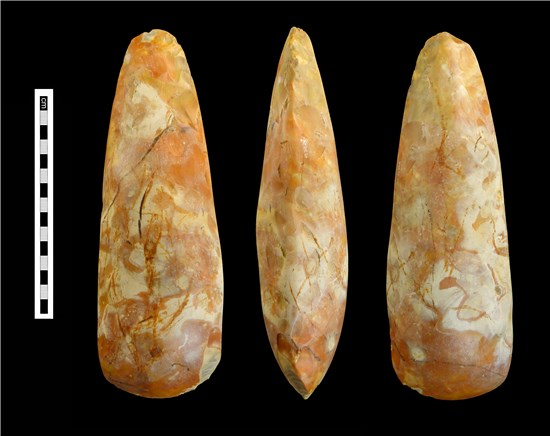July’s Find of the Month is a rather large and magnificent example of a Neolithic polished flint axehead. It weighs in at a hefty 1.6Kg and is 256mm long.
Polished axes were produced by taking a flaked axehead and rubbing it against sandstone to remove the flake scars. Water was used to cool the axe during this process, and sand was sometimes added to make it quicker. A functional flaked axe can be made (by an experienced knapper) in about 20 minutes, however it can take up to 40 hours to completely polish a large axe (Butler 2005: 141-2).

The blade end of an axe was polished to improve its strength. The protruding angles and holes created by the flaking process can easily catch on wood while chopping, which can cause the axe to break. Polishing the axe removes the points where this impact could cause problems and also reduces friction, allowing a smoother chopping motion. Polishing the butt of the axe can actually make it less efficient, as the smoother surface would allow it to slip out of the handle more easily. It is thought that polishing areas other than the blade was mainly done for aesthetic reasons.
Although this example has not been entirely ground and polished to remove all the flake scars its aesthetic appeal is enhanced by a beautiful orange and off-white mottled patination. There is a very small amount of damage to either end, but the cutting edge is still sharp after circa 5000 years in the ground. The axe was found in Forncett in South Norfolk and was generously donated to Norwich Castle Museum by the finder.
Full details of the axehead can be found at www.finds.org.uk using the search reference NMS-6A485E